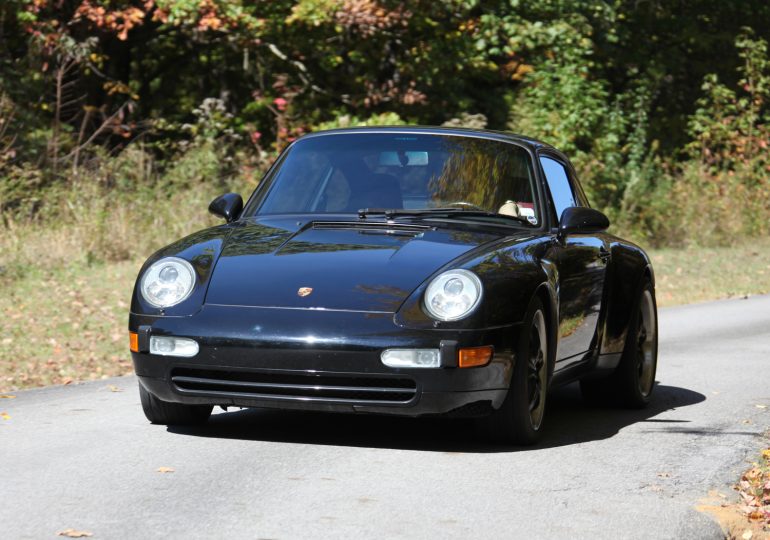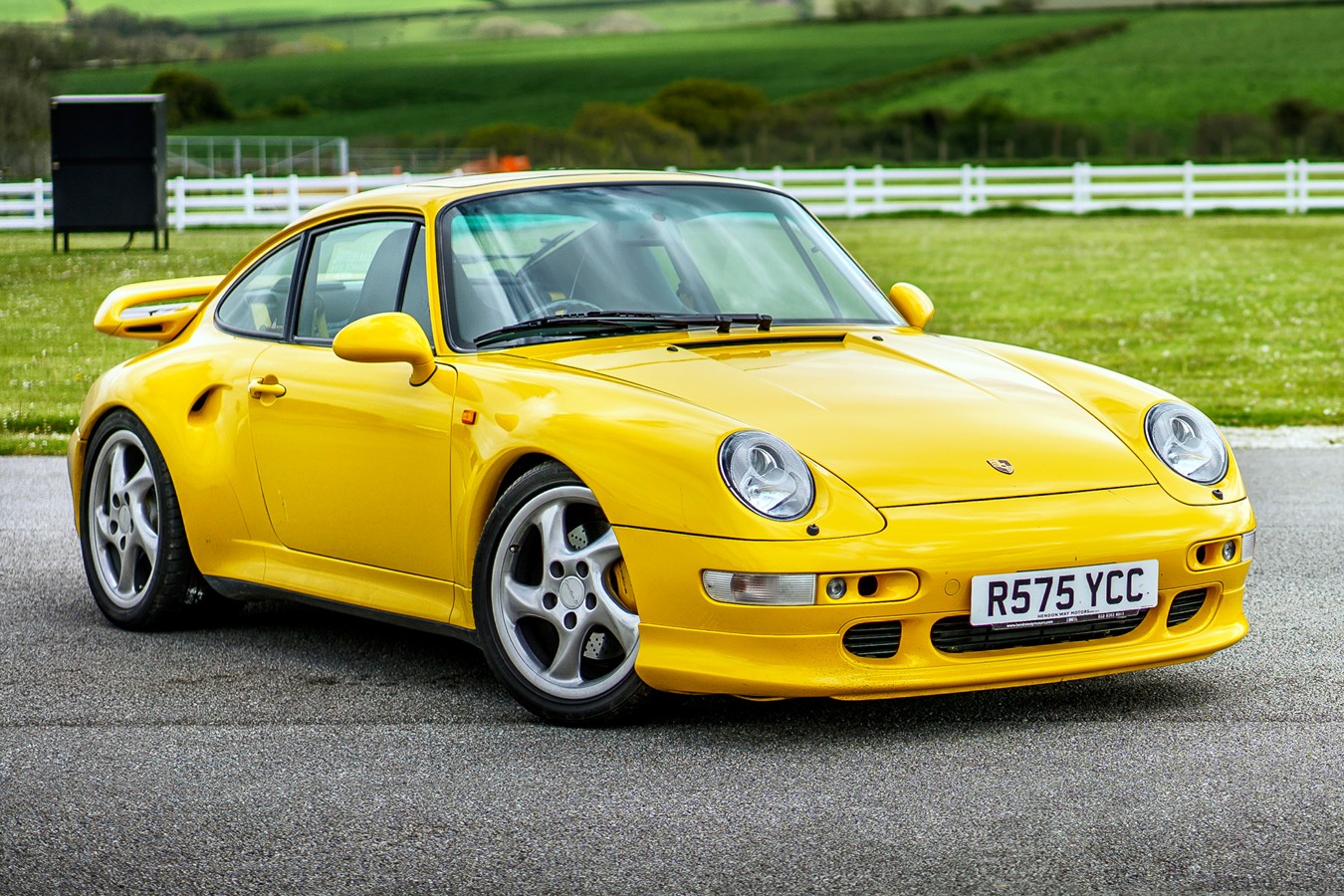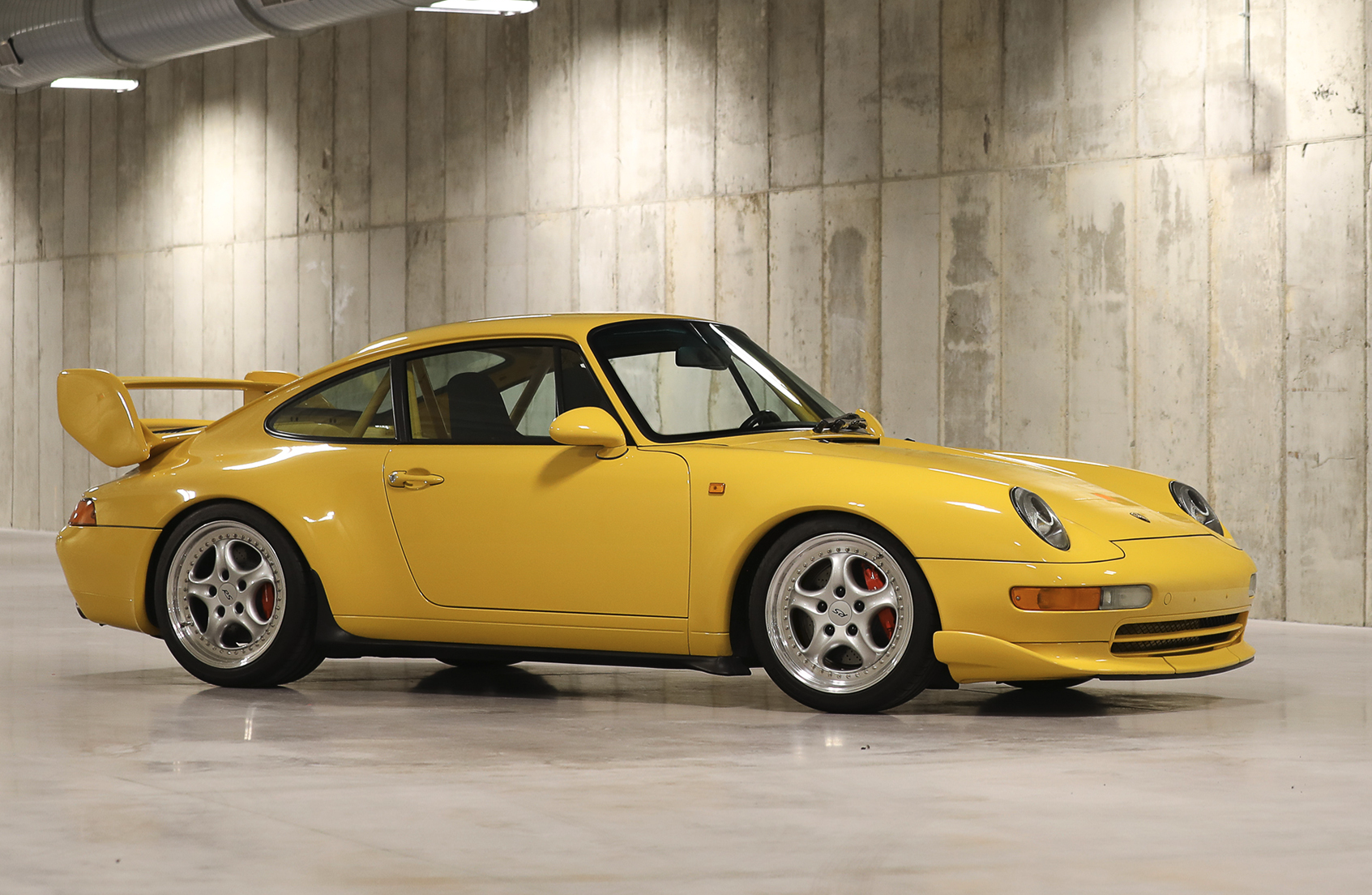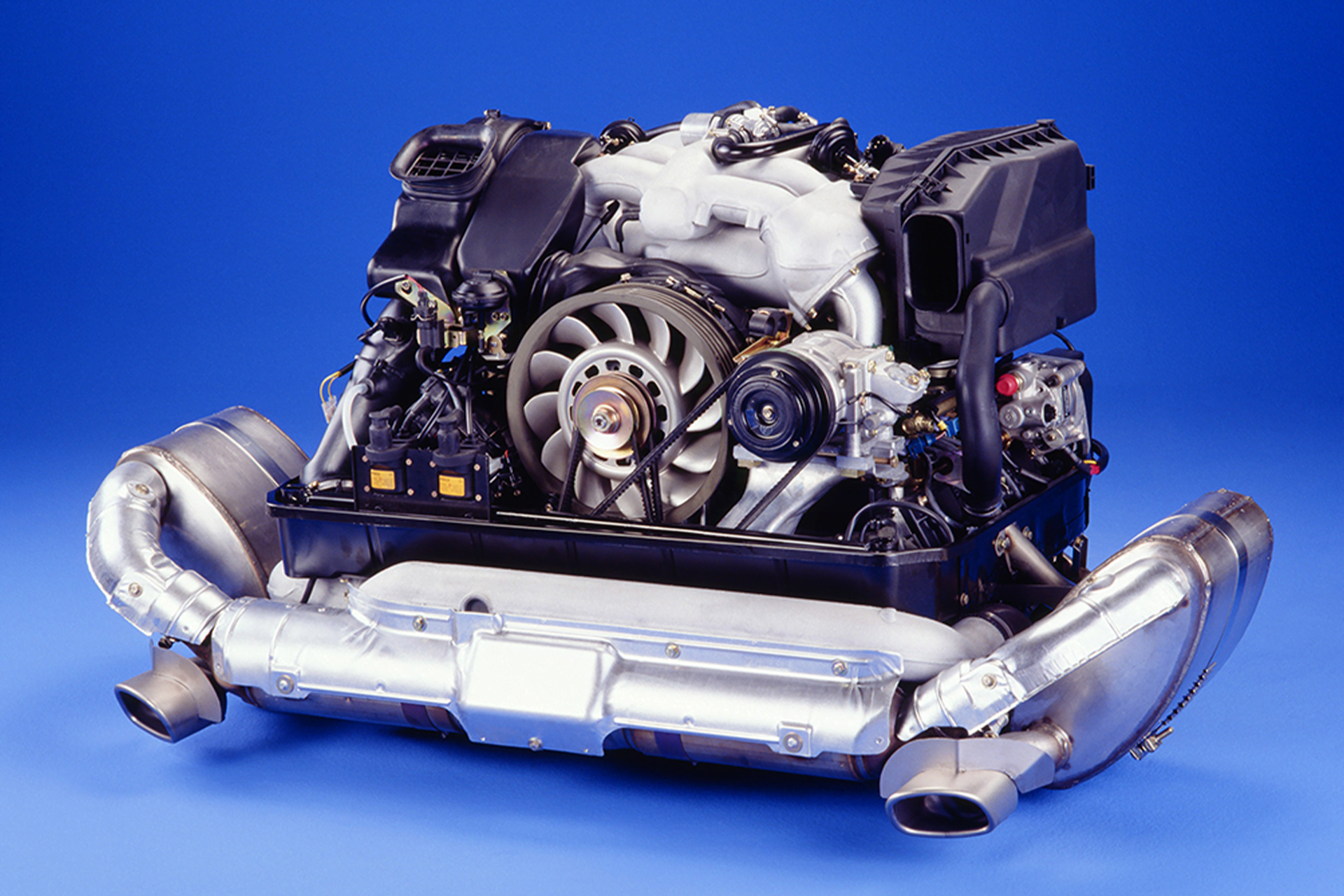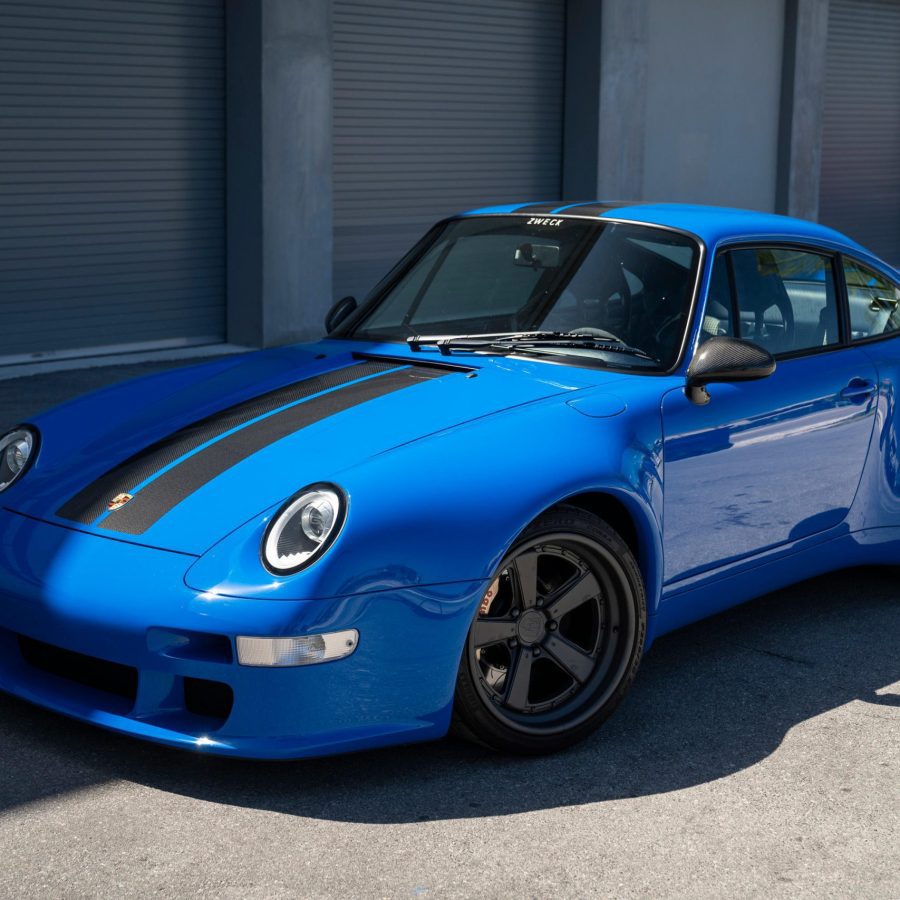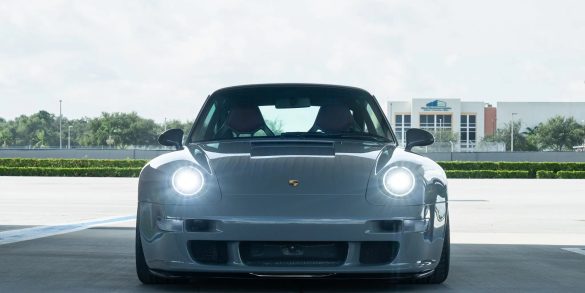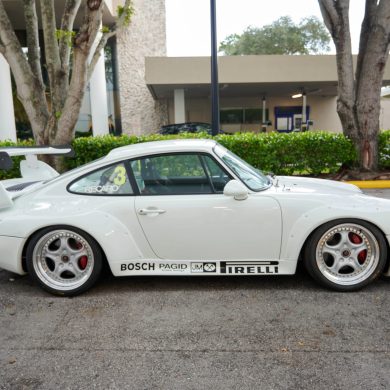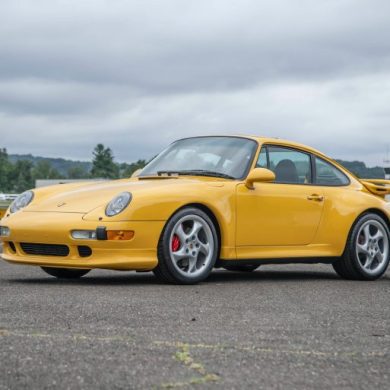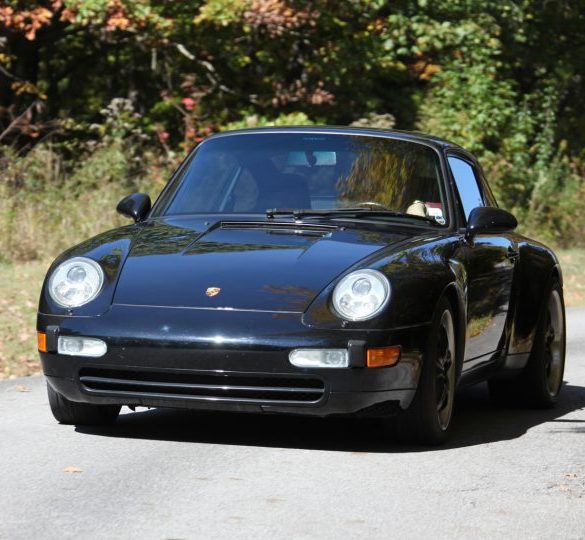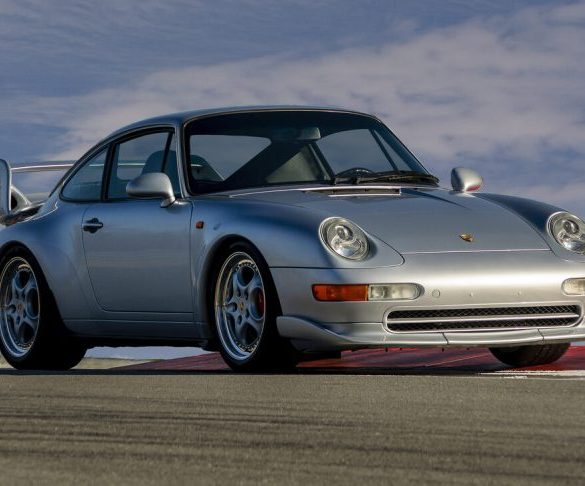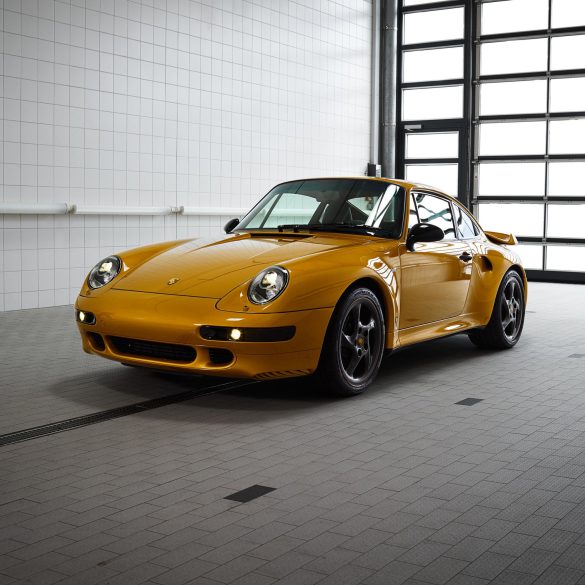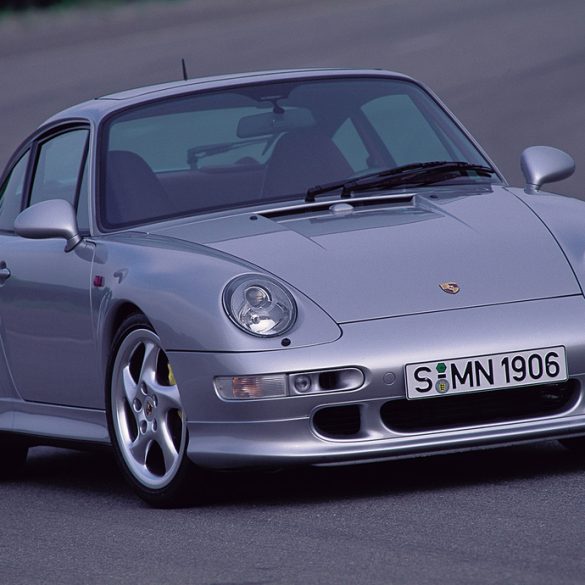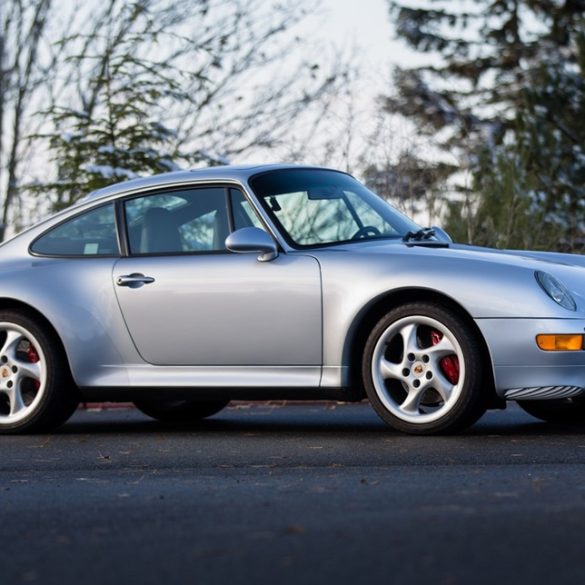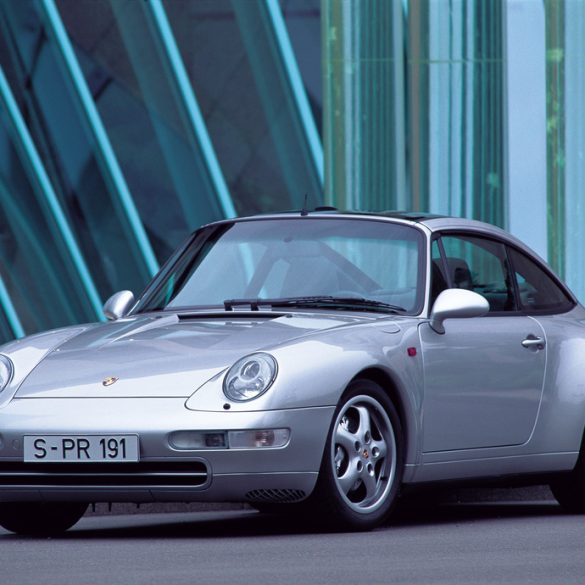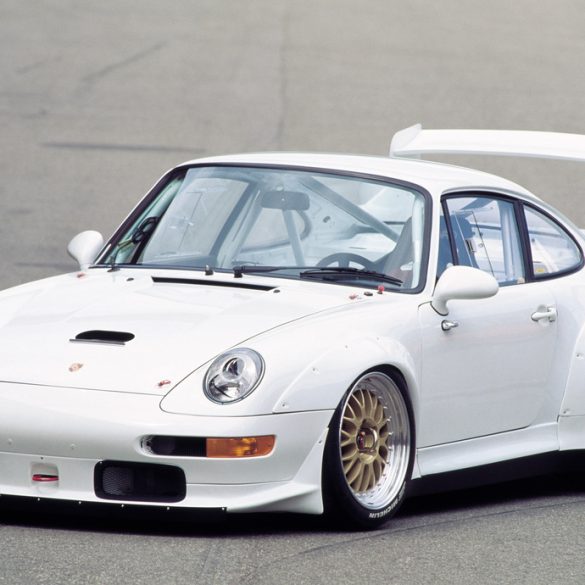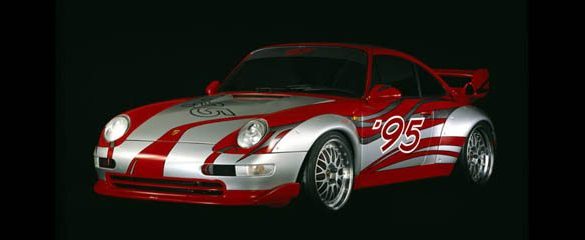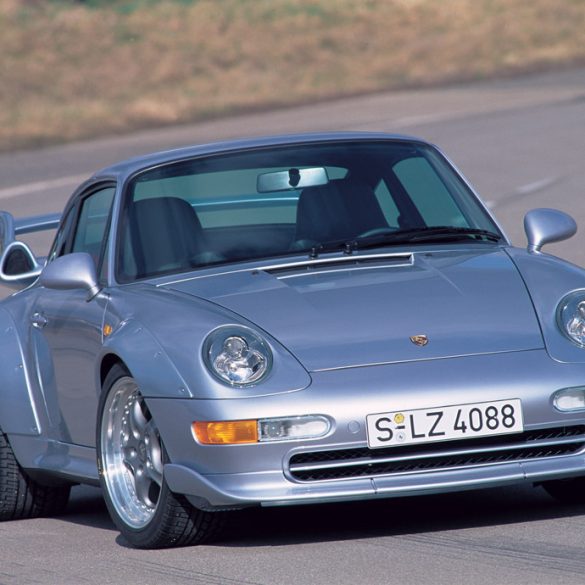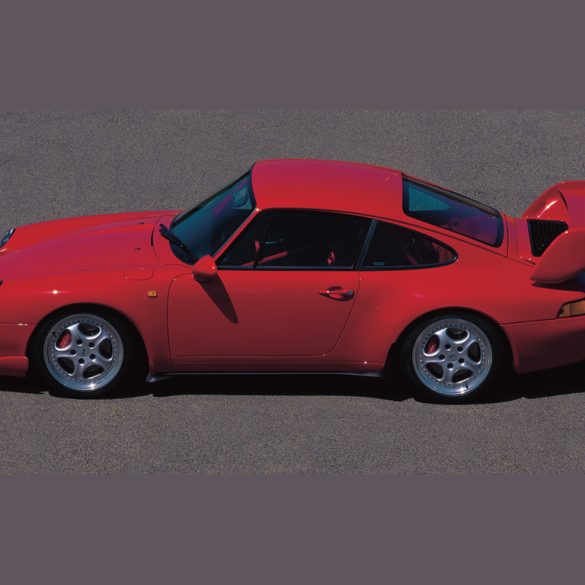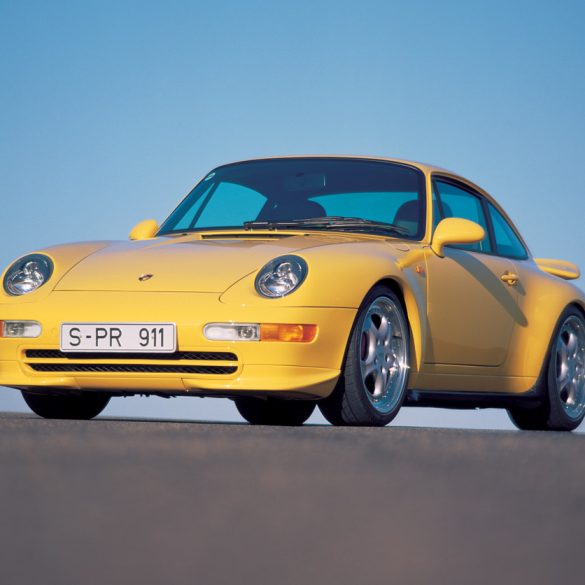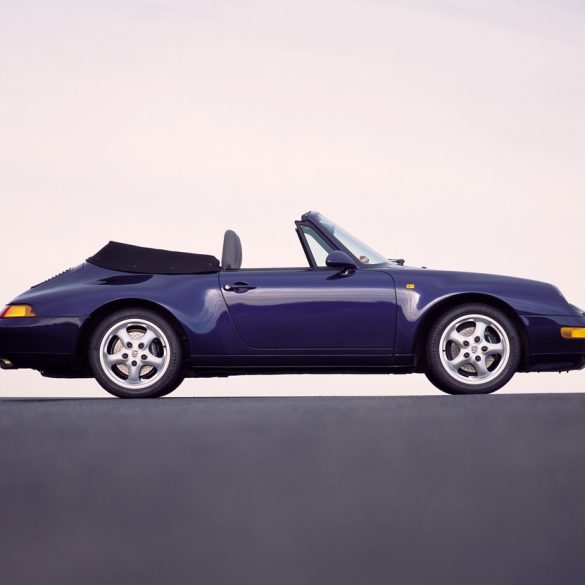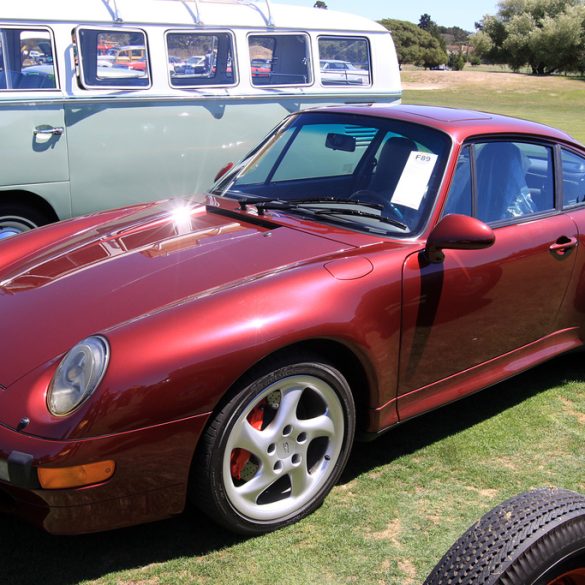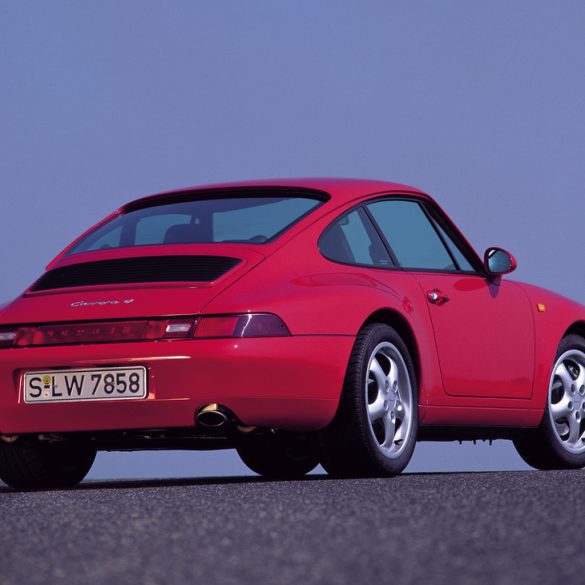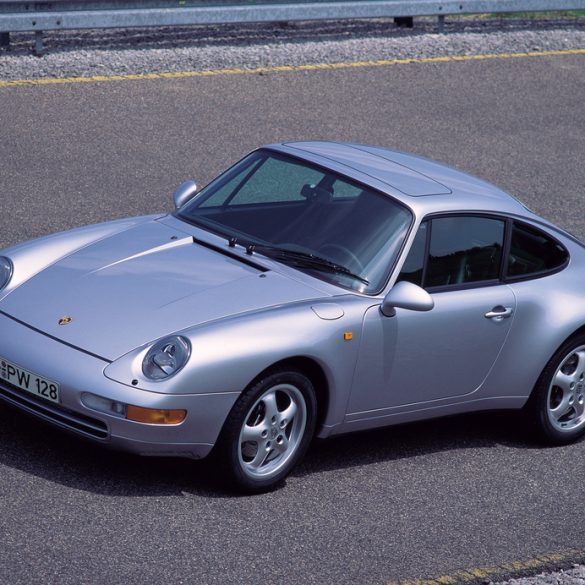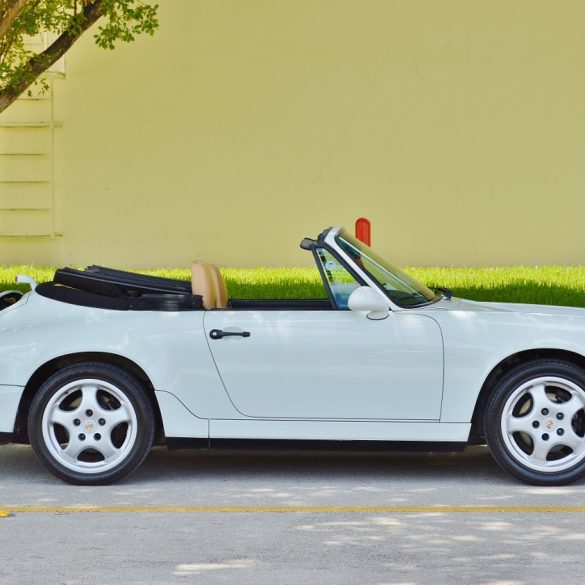Porsche 911 (993)
The Ultimate Guide to the 1994 to 1998 Porsche 911
The Porsche 993 (1993-1998), the last of the air-cooled 911s, is revered by enthusiasts as the pinnacle of the original 911 formula. This is your ultimate guide to this legendary generation, exploring its evolutionary design, refined performance, and the diverse range of models that cemented its iconic status. From the elegant Carrera coupe to the ferocious Turbo S and the ultra-rare GT2, we'll uncover what makes the 993 so special and why it continues to captivate drivers decades later.
Background / Featured Stories / Standard Models / Specials & Race / Engines / Buyer Guide / The Market / Deep Dives
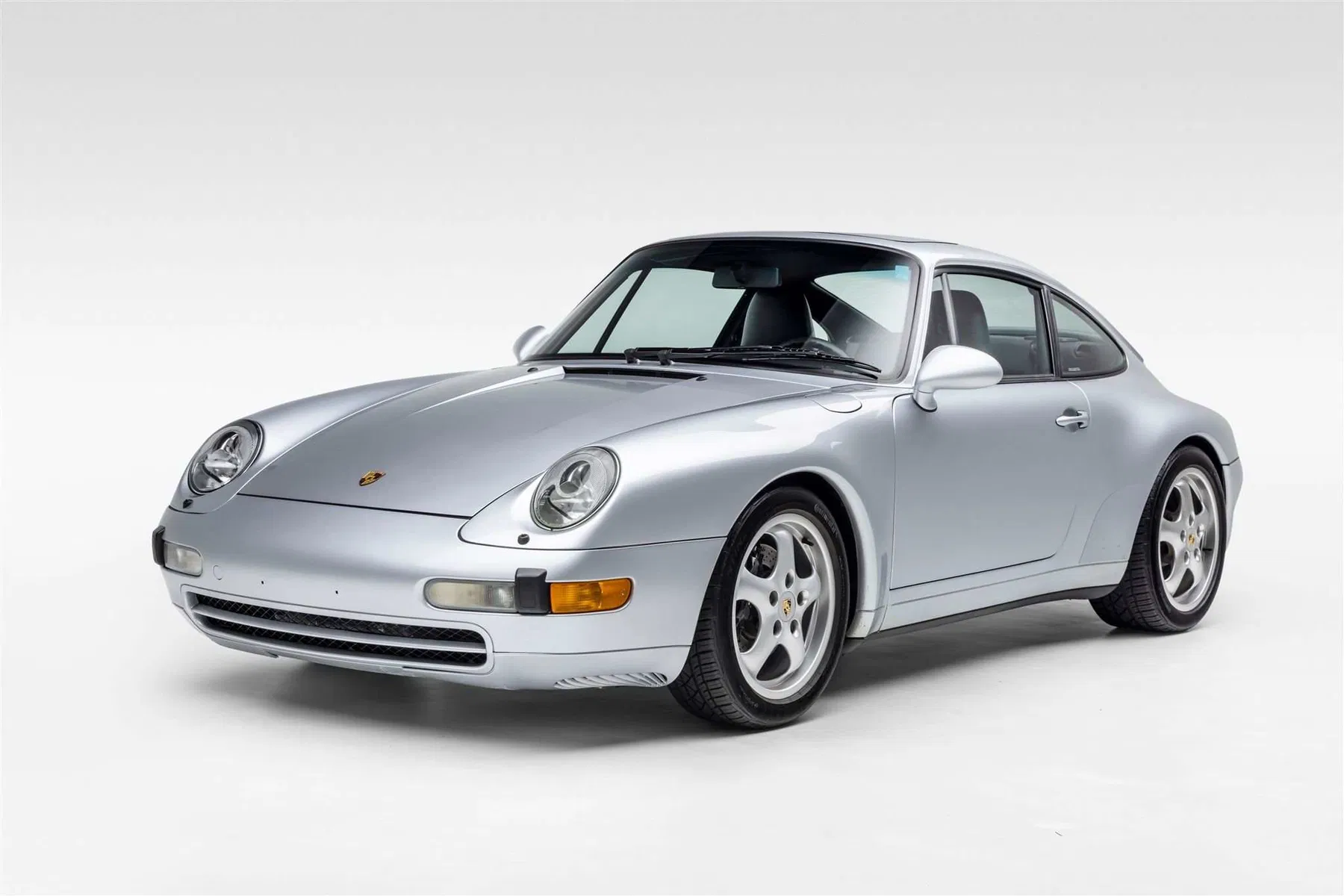
The Ultimate Guide To The Porsche 993: Every Variant, Specs, Reviews, Performance & More
The Porsche 911 (993) is often hailed as one of the finest cars ever to come out of Stuttgart and is considered by many to be the pinnacle of the air-cooled 911 lineage. Produced between 1994 and 1998, the 993 generation holds a special place in Porsche history as the last 911 to feature an air-cooled engine. This guide delves into the rich history of the 993, explores the various regular and special models, and examines why it remains so revered among enthusiasts and collectors today.
A Brief History of the Porsche 993
Introduced in 1994 as the successor to the 964 generation, the Porsche 993 was more than just an incremental update; it was a transformative evolution. Designed under the guidance of Harm Lagaay, the 993 showcased a more aerodynamic and modern design while retaining the unmistakable 911 silhouette. The timing of its release was crucial, as Porsche was struggling financially in the early 1990s. The 993 helped turn the company’s fortunes around by addressing the 964’s shortcomings and elevating the driving experience to new heights.
The 993 perfectly blended classic air-cooled heritage with modern engineering, becoming a defining moment for the brand. By the end of its production in 1998, Porsche had begun transitioning to the water-cooled 996 generation, making the 993 a poignant farewell to the air-cooled era.
Key Features and Innovations
One of the most significant advancements in the 993 was its new multi-link rear suspension, which transformed the driving dynamics. This design offered improved handling, a smoother ride, and better stability, especially during hard acceleration when earlier 911s were known for their twitchy rear ends.
The 993’s design was refined and modernized, with smoother lines, integrated bumpers, and better aerodynamics. These changes reduced drag and enhanced high-speed stability, giving the 993 a poised and confident character on the road.
Under the hood, the 3.6-liter flat-six engine represented the zenith of air-cooled engineering. Its raspy exhaust note and linear power delivery offered a driving experience that was uniquely visceral. The 993’s build quality was exceptional, a testament to Porsche’s commitment to precision and durability during this period.
Exploring the Regular Models
The standard 911 Carrera was available from 1994 to 1998 and was powered by a 3.6-liter air-cooled flat-six engine, initially producing 272 horsepower and later refined to 285 horsepower. Drivers could choose between a 6-speed manual transmission for a more engaged driving experience or a 4-speed Tiptronic automatic for a more relaxed approach. Available in both coupe and cabriolet versions, the Carrera was an ideal balance of performance and everyday usability.
For those seeking additional traction, the Carrera 4 offered an advanced all-wheel-drive system that enhanced stability and confidence, particularly in wet or slippery conditions. This AWD setup was an improvement over the 964’s version, reducing the understeer tendencies that had previously been a drawback.
In 1996, Porsche introduced the 911 Targa, which departed from the traditional removable roof panel. Instead, it featured an innovative sliding glass roof that retracted beneath the rear window. This design provided an open-air experience while maintaining the car’s structural integrity and sleek profile.
Towards the end of the production run, the Carrera S and Carrera 4S models arrived, offering the aggressive wide-body styling of the Turbo models. The Carrera S retained rear-wheel drive, while the Carrera 4S featured all-wheel drive. Both models combined the visual appeal of the Turbo with the naturally aspirated charm of the Carrera engine, making them highly desirable among enthusiasts.
The Special Models
The 993 Turbo, introduced in 1995, was a landmark model that showcased Porsche’s engineering prowess. Its 3.6-liter twin-turbocharged engine produced 408 horsepower, and its all-wheel-drive system provided relentless grip. This combination enabled blistering acceleration, with a 0-60 mph time of just 4.4 seconds and a top speed of 180 mph. The wide-body design and aerodynamic enhancements gave the Turbo an unmistakable presence on the road.
In 1997, Porsche unveiled the Turbo S, a rarer and more potent version limited to just 345 units worldwide. With 424 horsepower and distinctive design elements like carbon-fiber interior trim, the Turbo S pushed the boundaries of performance and exclusivity.
For purists, the 911 Carrera RS was the ultimate expression of raw driving pleasure. Powered by a 3.8-liter engine producing 300 horsepower, the RS was stripped of non-essentials to reduce weight. This track-focused machine featured lightweight body panels, minimal interior trim, and no power accessories, offering an unfiltered connection between driver and machine.
At the top of the performance hierarchy was the 911 GT2. Built as a homologation special for GT racing, the GT2 featured a rear-wheel-drive layout and a 3.6-liter twin-turbo engine producing up to 450 horsepower. With only 57 road-going versions produced, the GT2 was brutally fast and incredibly rare, representing the wildest and most extreme iteration of the 993.
Why the 993 Generation is So Special
The 993 holds a unique place in Porsche history as the last air-cooled 911. Its engine offers a distinctive sound and character that later water-cooled models cannot replicate. Beyond its mechanical charm, the 993’s design is timeless, blending classic 911 curves with modern aerodynamics. This balance of tradition and innovation has cemented its status as one of the most beautiful 911s ever built.
Porsche’s attention to engineering perfection during the 993’s production resulted in a car that is both robust and refined. The new rear suspension dramatically improved handling and comfort, making the 993 more enjoyable to drive on both road and track.
Collectors and enthusiasts prize the 993 not only for its driving experience but also for its investment potential. Special models like the Turbo, Turbo S, RS, and GT2 have appreciated significantly in value, reflecting their desirability and historical importance.
Conclusion
The Porsche 911 (993 generation) is a masterclass in blending heritage, innovation, and performance. As the final air-cooled 911, it marks the end of an era and continues to captivate with its timeless design, exceptional build quality, and thrilling driving dynamics. Whether it’s the elegant Carrera, the open-top Targa, or the ferocious GT2, the 993 offers a unique experience that remains unmatched in the world of sports cars. For those who appreciate engineering excellence and a touch of nostalgia, the 993 stands as a legendary chapter in the story of the Porsche 911.
Porsche 911 (993) Basics
Manufacturer: Porsche AG
Also Called: Porsche 993, Type 993
Type: 993
Generation: Fourth Generation 911
Production Years: 1994 - 1998
Model Years: 1994 - 1998
Designer: Tony Hatter
Body Style: 2-door Coupé, 2-door Roadster, 2-door Targa, 2-door Speedster
Layout: Rear-engine, rear-wheel drive, Rear-engine, all-wheel drive
Engines: 3.6 L–3.8 L air-cooled naturally aspirated/twin-turbocharged M64 SOHC flat-6
Transmission: 4-speed automatic, 5-speed manual, 6-speed manual
Premiere: 1993 September 9 at IAA Frankfurt motor show
Predecessor: Porsche 911 964
Successor: Porsche 911 996
Did You Know?
The 993 holds a special place in Porsche history as the final generation to feature an air-cooled engine, a design that defined the 911 for decades.
The 993 was the first 911 to receive a completely redesigned aluminum multi-link rear suspension. It significantly improved the car's handling, making it more stable and predictable, particularly when cornering at high speeds.
The 993 Targa introduced a unique "greenhouse" system with a large sliding glass roof that retracted beneath the rear window.
Only two examples of the 993 Speedster were ever produced, making it one of the rarest and most desirable Porsche models ever.
Lots More
If you want more 993, check out our sister website Stuttcars.com for the ultimate guide to the Porsche 911 (993).
The 993 is the sweet spot in 911 history. It has the classic air-cooled feel but with modern handling and refinement.
Top Gear
Technical Innovations Create More Refined and Capable Sports Car Than 964 Generation.
The Porsche 993 represented a significant step forward in terms of engineering and refinement for the 911. One of the most notable advancements was the introduction of a completely redesigned multi-link rear suspension. This innovative system, constructed from lightweight aluminum, replaced the torsion bar setup used in previous generations. The result was a dramatic improvement in handling, providing greater stability, reduced lift-off oversteer, and a more comfortable ride.
Under the hood, the 993 initially featured an evolution of the 3.6-liter flat-six engine from the 964, now with a redesigned exhaust system and hydraulic lifters. This engine produced 272 horsepower in its initial iteration. In 1996, Porsche introduced VarioRam, a variable intake runner system, across the Carrera lineup. This boosted power output to 285 horsepower and improved torque delivery across the rev range. The 993 also marked the debut of a new twin-turbocharged 3.6-liter flat-six in the Turbo model, generating an impressive 402 horsepower.
The 993 was the first 911 generation to feature a six-speed manual transmission as standard. This gearbox allowed drivers to make the most of the engine's power band and contributed to the car's engaging driving experience. For those seeking more convenience, Porsche also offered the Tiptronic four-speed automatic transmission, first introduced in the 964. From the 1995 model year onwards, the Tiptronic S was available, featuring steering wheel-mounted controls and refined software for smoother and quicker gear changes.
Beyond these key advancements, the 993 benefited from numerous other refinements. These included larger brakes with drilled discs for improved stopping power, a dual-flow exhaust system for enhanced engine performance and a more captivating sound, and improved power steering for greater precision and feedback. Together, these technical improvements transformed the 993 into a more refined and capable sports car, while retaining the essential character that made the 911 an icon.
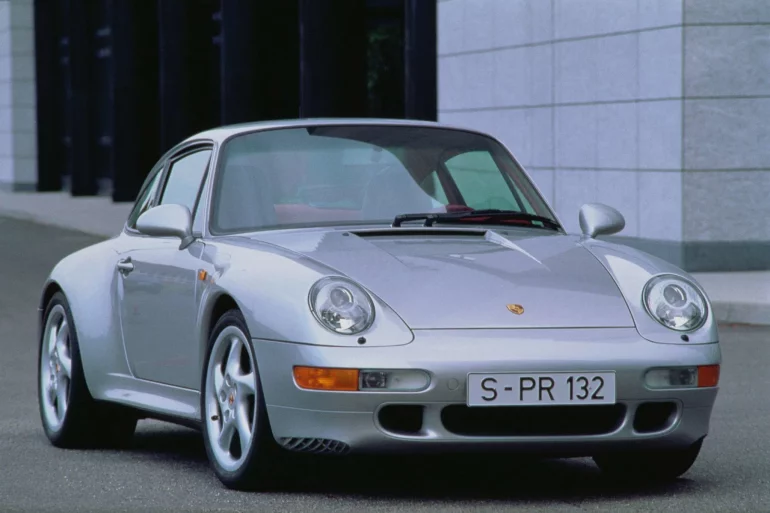
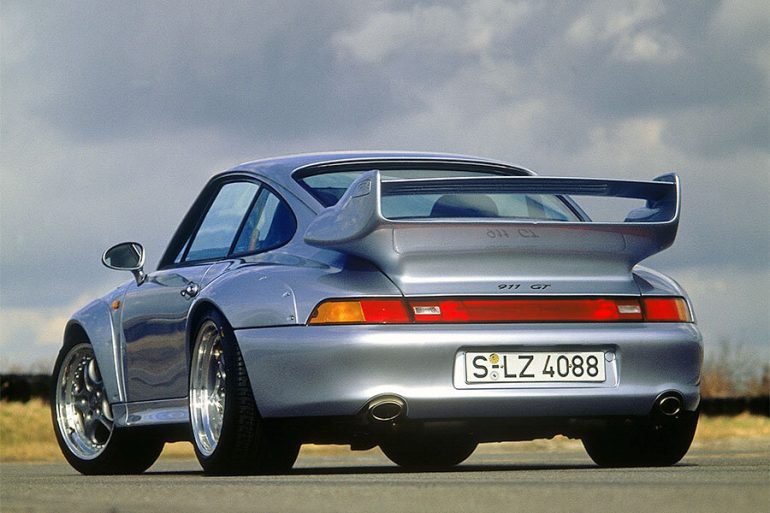
Special Edition Heaven Solidify the 993's Status as a Collector's Dream.
The Porsche 993 generation offered a diverse range of models, with the core being the Carrera models, available in both coupe and cabriolet body styles. These were offered with rear-wheel drive (Carrera 2) or all-wheel drive (Carrera 4), providing a choice between classic 911 handling and enhanced traction. The Targa, with its innovative sliding glass roof, offered open-top driving while retaining the 911's iconic silhouette.
The 993 Turbo stood out with its muscular widebody stance and a powerful twin-turbocharged engine. This was the first 911 Turbo to feature all-wheel drive. The Turbo S, a limited-production variant crafted by the Porsche Exclusiv department, took performance even further with enhanced engine output and unique styling touches.
Beyond these core models, Porsche created a number of special editions, including the Carrera RS. It was a lightweight and track-focused machine, offered raw performance and a visceral driving experience. Its stripped-down interior and stiffer suspension made it a formidable machine on both road and track. The GT2, a homologation special built for racing, took the 993's performance to the extreme with its aggressive aerodynamics, stripped-out interior, and a ferocious twin-turbocharged engine.
Adding to the 993's allure were ultra-rare models like the Turbo Cabriolet, which combined the Turbo's performance with open-top driving, and the legendary 993 Speedster, a minimalist roadster with classic design cues and a limited production run of just two units.
Porsche 993 Regular Model Variants
For many Porsche purists, the 993 generation (1993-1998) represents the end of an era, the last 911 to retain the classic air-cooled engine and the raw driving experience it provided. Like its predecessors, the 993 offered a diverse range of models to suit various tastes and driving styles. The Carrera, available in both rear-wheel and all-wheel drive (Carrera 4), formed the foundation of the lineup. In 1995, Porsche introduced the 993 Cabriolet, featuring a meticulously crafted, fully electric soft-top. A year later, the Targa joined the family, debuting the innovative "greenhouse" system with its sliding glass roof. Performance enthusiasts were treated to the 993 Turbo, boasting a new twin-turbocharged 3.6-liter engine that delivered over 402 horsepower. This was followed by the even more exclusive Turbo S in 1997, a limited-production masterpiece crafted by the Porsche Exclusiv department. Among the most sought-after 993 variants are the Carrera 4S (1996) and Carrera S (1997). These models shared the Turbo's wider bodywork but retained the naturally aspirated engine, creating a unique blend of performance and aesthetics. Further distinguishing them from the standard Carrera were their slightly lowered suspensions, enhancing their sporty handling characteristics.
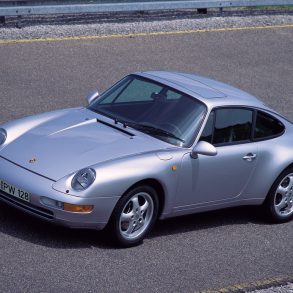
Porsche 911 Carrera (993)
Years: 1994 - 1997
Engine: 3.6 L Flat 6 (M64/05, M63/21)
Production: 23,127 units (V1 + V2)
Power: 268 bhp- 282 bhp
Torque: 243 ft lbs - 251 ft lbs
0-60 mph: 5.4 seconds
Top Speed: 171 mph
Introduced in late 1994 the standard 911 Carrera of the 993 generation was fitted with a development of the M64 3.6-liter flat six that had been found in the prior 964 generation. With a redesigned exhaust system and new hydraulic lifters, the engine produced 272 horsepower. Approximately 23,000 coupes were built.
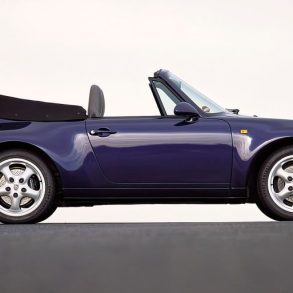
Porsche 911 Cabriolet (993)
Years: 1994-1997
Engine: 3.6 L Flat 6 (M64/05, M63/21)
Production: 15,499 units
Power: 268 bhp- 282 bhp
Torque: 243 ft lbs - 251 ft lbs
0-60 mph: 5.4 seconds
Top Speed: 171 mph
Introduced in 1994 the Porsche 911 Cabriolet was more of a Grand Tourismo vehicle than a sports car. The 911 Cabrio featured the same cues as its coupe version, but with a few differences apart from the lack of a fixed roof, of course. The 3.6-liter engine was offered in two versions, with 275 hp and 285 hp. The latter featured the VarioCam system.
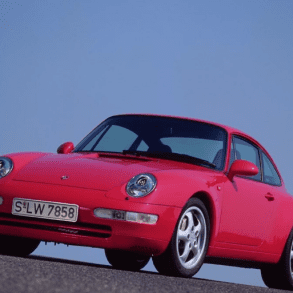
Porsche 911 Carrera 4 (993)
Years: 1995-1997
Engine: 3.6 L Flat 6 (M64/05, M63/21)
Production: 4,744 units
Power: 268 bhp- 282 bhp
Torque: 243 ft lbs - 251 ft lbs
0-60 mph: 5.2 seconds
Top Speed: 171 mph
The 993 Carrera 4, sold between 1995 and 1998, uses the same powerplant as the standard 993 Carrera, but puts power down to all four wheels through a 6-speed manual transmission. A “Carrera 4” badge on the tail, along with silver-painted brake calipers and clear front and side turn signals, help distinguish the AWD C4 from the C2.
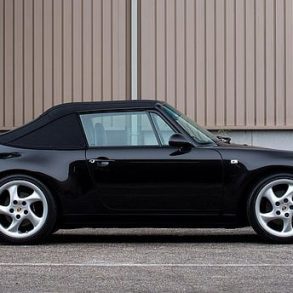
Porsche 911 Carrera 4 Cabriolet
Years: 1995-1997
Engine: 3.6 L Flat 6 (M64/05, M63/21)
Production: 2,422 units
Power: 268 bhp- 282 bhp
Torque: 243 ft lbs - 251 ft lbs
0-60 mph: 5.2 seconds
Top Speed: 171 mph
2,500 cabriolets were made in the 993 Carrera 4. The 993 Carrera 4, sold between 1995 and 1998, uses the same powerplant as the standard 993 Carrera, but puts power down to all four wheels through a 6-speed manual transmission. A “Carrera 4” badge on the tail, along with silver-painted brake calipers and clear front and side turn signals.
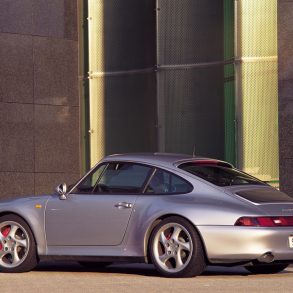
Porsche 911 Carrera 4S (993)
Years: 1996-1998
Engine: 3.6 L Flat 6 (M63/21)
Production: 6,948 units
Power: 282 bhp @ 6100 rpm
Torque: 251 ft lbs @ 5250 rpm
0-60 mph: 5.2 seconds
Top Speed: 168 mph
The 993 Carrera 4S was sold between 1995 to 1998 (as a 1996 model year onward variant). Much like the 993 Carrera S, the 993 Carrera 4S takes the 993 Carrera 4 powertrain and fits it into the widebody 993 Turbo shell, sporting 18″ alloy wheels. The engine was the same 3.6-liter naturally aspirated, but it was offered in the higher power output of 282 hp. As with the Carrera 4, it was only available with a 6-speed manual transmission.
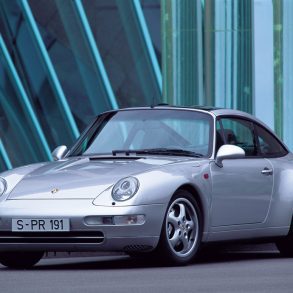
Porsche 911 Targa (993)
Years: 1996-1998
Engine: 3.6 L Flat 6 (M63/21)
Production: 4,583 units
Power: 282 bhp @ 6100 rpm
Torque: 251 ft lbs @ 5250 rpm
0-60 mph: 5.3 seconds
Top Speed: 171 mph
The Targa was the half-convertible bodywork offered by Porsche for the 911. By removing only a part of the roof and leave the closed-coupe rigid structure. It was offered a better sensation than a sunroof and it wasn't as heavy as a convertible. Unlike the previous Targa generation, the 993 featured a glass panel over the front passengers instead of a fabric one. The rest of the bodywork looked like the Carrera. Engine was reworked flat-six.
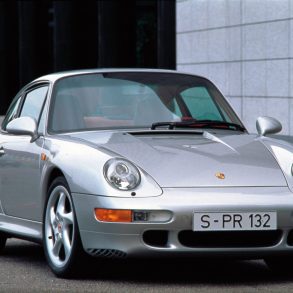
Porsche 911 Carrera S (993
Years: 1997-1998
Engine: 3.6 L Flat 6 (M63/21)
Production: 3,714 units
Power: 282 bhp @ 6100 rpm
Torque: 251 ft lbs @ 5250 rpm
0-60 mph: 5.2 seconds
Top Speed: 168 mph
The Carrera S was the ultimate, naturally aspirated version of the Carrera 2. The Carrera S trim for the 993 generation took the same mechanicals of the standard 993 Carrera and put them in the wide body of the Turbo. With three additional inches of width at the rear and a lowered ride height, the car wore 17” inch alloy wheels compared to the 16” wheels on the standard car. A total of 3,714 were made. There was no cabriolet version.
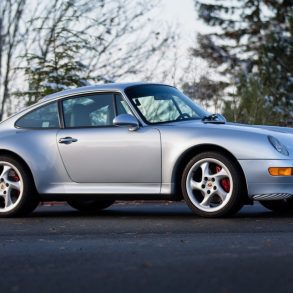
Porsche 911 Turbo (993)
Years: 1995-1998
Engine: 3.6 L Turbo Flat 6
Production: 5,978 units
Power: 408 bhp @ 5750 rpm
Torque: 398 ft lbs @ 4500 rpm
0-60 mph: 4.4 seconds
Top Speed: 180 mph
The 993 Turbo was available between late 1995 to 1998. Powered by a twin-turbocharged 3.6 liter flat six, it was rated at 402-horsepower. It’s distinguished easily from the rear, as the whale-tail spoiler is quite deep to house the intercoolers meant to cool the intake charge. This extra power might have been a handful for street drivers, so all-wheel drive from the 993 Carrera 4 added traction at all four corners. ~6,000 coupes were made.
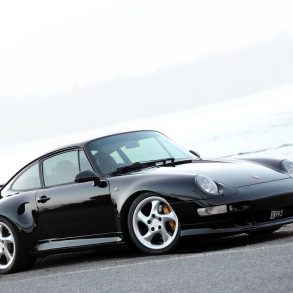
Porsche 911 Turbo S (993)
Years: 1997-1998
Engine: 3.6 L Turbo Flat 6
Production: 345 units
Power: 424 bhp @ 5750 rpm
Torque: 400 ft lbs @ 4500 rpm
0-60 mph: 3.6 seconds
Top Speed: 184 mph
In 1997, Porsche produced a limited factory-production run of what is the last air-cooled 911 Turbo, the 993 Turbo S. Turbo S’s were fitted with most Turbo options as standard and also came standard with Aerokit II front and rear spoilers, unique side air ducts and front air inlets, and unique yellow brake calipers. Power increased over the standard 911 Turbo to 424HP for US models and 450HP for non-US models.
Porsche 993 Special Edition & Race Models
The 993 generation didn't stop at the Carrera and Turbo models; Porsche also unleashed a pair of high-performance variants that pushed the limits even further: the Carrera RS and the groundbreaking GT2. The latter marked a significant milestone, introducing a new era of twin-turbocharged flat-six engines in the 911. Originally developed as a purebred race car for the GT2 class, the 993 GT2 also spawned a road-legal version for homologation purposes. This beast boasted a twin-turbo 3.6-liter flat-six that churned out a staggering 424 horsepower and 432 pound-feet of torque, making it the most powerful production Porsche at the time. In 1998, power was further increased to an astounding 444 horses.
The race-spec GT2 was even more extreme. Its twin-turbo flat-six delivered 450 horsepower and was meticulously tuned for endurance racing. Porsche also developed a GT2 Evo version specifically for the GT1 class, which unleashed a monstrous 600 horsepower. Beyond the track-focused models, the 993 lineup included some truly unique and rare gems. The 993 Turbo Cabriolet, a limited edition of only 14 units, combined the 993's body with the running gear of the 964 Turbo. Even more elusive was the 993 Speedster, a unicorn of the Porsche world with only two examples ever produced. For purists seeking the ultimate in naturally aspirated performance, there was the 993 Carrera RS. This lightweight, track-focused machine was stripped down and stiffened for maximum performance, with a 3.8-liter flat-six engine producing 300 horsepower.
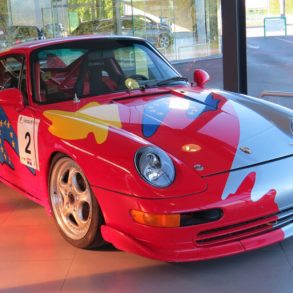
Porsche 911 Cup 3.8 (993)
Years: 1994-1998
Engine: 3.6 L Flat 6 (M64/70)
Production: 195 units
Power: 310 bhp at 6100 rpm
Torque: -
0-60 mph: -
Top Speed: 174 mph
The 993 Carrera Cup 3.8 was developed from the 993 Carrera RS, as purpose-built competition car designed by Porsche for its single-model racing series taking place around the world. Replacing the 964 Carrera Cup, the 993 Carrera Cup had a claimed 315 bhp on tap, weighed only 1,100kg, and offered a top speed of around 270km/h (170mph). Approximately 216 samples were built. The Carrera Cup should not be confused witth the Carrera RSR, or the 993 Carrera RS Clubsport.
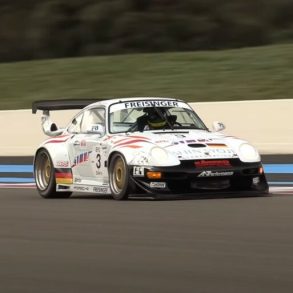
Porsche 911 GT2 Race (993)
Years: 1995-1996
Engine: 3.6 L Turbo Flat 6
Production: 69 units
Power: 450 bhp @ 5750 rpm
Torque: 491 ft lbs @ 5000 rpm
0-60 mph: 3.8 seconds
Top Speed: 187 mph
The racing sportscar is prepared by Porsche following the Le Mans GT2 regulations for the over 1,150 kg weight classification. It features a 3.6-litre engine with two turbo-chargers (KKK 24 with 33.8 mm restrictors), which delivers around 450 hp at 5,750 rpm. Even this racing vehicle, with its suspension featuring a McPherson front axle and Porsche multi-link rear axle with LSA system, closely resembles its production relative. It scored numerous victories in a wide variety of racing venues.
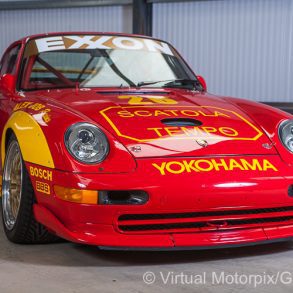
Porsche 911 Cup 3.8 RSR
Years: 1997-1998
Engine: 3.6 L Flat 6 (M64/70)
Production: N/A
Power: 310 bhp at 6100 rpm
Torque: -
0-60 mph: -
Top Speed: 174 mph
The 993 Carrera RSR takes the 993 Carrera RS formula and makes it even more track-ready by adding a roll-cage and removing carpet, power windows, and a/c. There were just thirty Porsche 911 Cup 3.8 RSR (Type 993) race cars produced for the 1997 season. This model was the last of the breed of air-cooled, naturally-aspirated 911 race cars to come from the Weissach race department before the introduction of the Type 996 water-cooled cars. Good luck finding one that is in good shape.
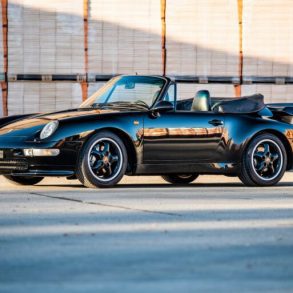
Porsche 911 Turbo Cabriolet (993)
Years: 1995
Engine: 3.6 L Turbo Flat 6 (M64/50)
Production: 14 units
Power: 360 bhp @ 5500 rpm
Torque: 384 ft lbs @ 4200 rpm
0-60 mph: 4.7 seconds
Top Speed: 174 mph
The Porsche 911 Turbo Cabriolet (993 generation) is an incredibly rare car – only 14 were built in 1995, in the early days of 993 production. Rather than the contemporary twin-turbo powerplant in the 993 Turbo Coupe, the 993 Turbo Cab was fitted with the single turbo of the 964 Turbo 3.6. Although the Turbo Coupé was introduced earlier, the actual production started after the Turbo Cabriolets were sold. Turbo Cabriolets were 1995 models by VIN and Turbo Coupés were 1996 models.
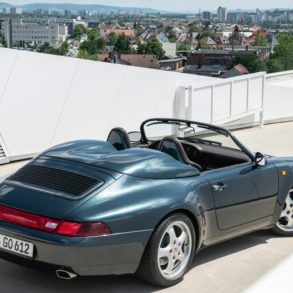
Porsche 911 Speedster (993)
Years: 1995
Engine: 3.6 L Flat 6
Production: 2 units
Power: 282 bhp @ 6100 rpm
Torque: 251 ft lbs @ 5250 rpm
0-60 mph: 5.4 seconds
Top Speed: 171 mph
Porsche faithful are probably shaking their heads. Porsche never officially made a production 993 Speedster. Notice we said “production.” In 1995, the company created a dark green 993 Speedster for Ferdinand “Butzi” Porsche 60th birthday. Jerry Seinfeld commissioned a silver 993 Speedster in 1998, though it may have begun life as either a Targa or Cab before being sent to Porsche Exclusive. Only two Speedsters were ever made.
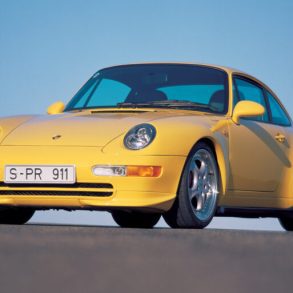
Porsche 911 Carrera RS 3.8 (993)
Years: 1995-1996
Engine: 3.6 L Flat 6 (M64/20)
Production: 1,014 units
Power: 300 bhp @ 6,500 rpm
Torque: 262 ft lbs @ 5400 rpm
0-60 mph: 4.7 seconds
Top Speed: 172 mph
The 993 Carrera RS is a lightweight, stiffer version of the naturally-aspirated 993 Carrera meant for ultimate street performance. At its heart was the 3.8-liter normally aspirated Type M64/20 engine producing 300 bhp at 6,500 rpm along with 262 foot-pounds of torque at 5,400 rpm. Looking to save as much weight as possible, every non-essential item from the car was removed. The Carrera RS tipped the scales at a 1,280 kg.
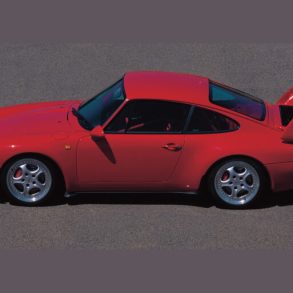
Porsche 911 Carrera RS 3.8 Clubsport
Years: 1995-1996
Engine: 3.6 L Flat 6 (M64/20)
Production: 227 units
Power: 300 bhp @ 6,500 rpm
Torque: 262 ft lbs @ 5400 rpm
0-60 mph: 4.7 seconds
Top Speed: 172 mph
Built to meet the FIA GT2 homologation requirements, is a race-ready, although street legal variant of the 993 Carrera RS, not to be confused with the track only 993 Carrera Cup RSR. It came with a welded-in roll cage as standard, considerably increasing its rigidity, racing bucket seats, six-point safety harnesses, battery isolator switch, fire extinguisher, and a huge fixed rear wing, the latter also available on the 'base model' RS.
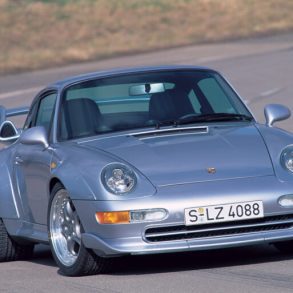
Porsche 911 GT2 (993)
Years: 1995-1998
Engine: 3.6 L Turbo Flat 6
Production: 37 units (+21 Club units)
Power: 424 bhp - 450 bhp
Torque: 400 ft lbs - 432 ft lbs
0-60 mph: 3.9 - 3.7 seconds
Top Speed: 186 mph
The Porsche 911 GT2 (or GT as it was initially called) was built in order to meet homologation requirements for GT2 racing which had banned AWD cars by the mid 1990's. With two-wheel drive, the GT2 had weight savings compared to the standard 993 Turbo, making it instantly competitive in racing. The 993 GT2's original 3.6 L (220 cu in) engine generated a maximum power output of 424 hp. There was an update in 1998 that upped power to 450 bhp.
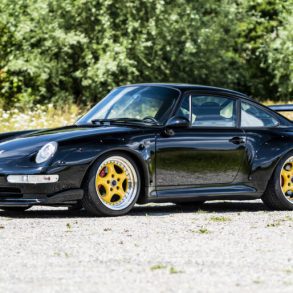
Porsche 911 GT2 Clubsport (993)
Years: 1995-1996
Engine: 3.6 L Turbo Flat 6
Production: 20 units
Power: 450 bhp @ 5750 rpm
Torque: 432 ft lbs @ 3500 rpm
0-60 mph: 3.7 seconds
Top Speed: 186 mph
The hardcore, race-focused version of the 993 Turbo, using essentially the same 3.6 L twin-turbocharged engine, but slightly modified with increased power output. The car was made to compete in the FIA GT2 racing class. Among this already very exclusive circle of 57 cars there is an even more rare community. 20 of the 57 road-legal cars were produced in a second – and last – badge with upgraded engine called GT2 “Clubsport”.
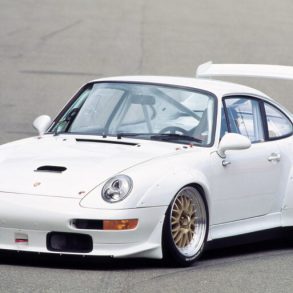
Porsche 911 GT2 Evo (993)
Years: 1996-1998
Engine: 3.6 L Turbo Flat 6
Production: 11 units
Power: 600 bhp @ 7000 rpm
Torque: 491 ft lbs @ 5000 rpm
0-60 mph: ~3.3 seconds
Top Speed: 187 mph
Represented the top specification ever produced for any air-cooled Porsche. Designed to compete in FIA GT1, it incorporated a twin turbocharged 3.6L flat-6 engine rated at a full 600 HP and 491 lb-ft of torque. As compared to the standard 993 GT2, Porsche widened the rear fender extensions to cover wider modular wheels and added a new front spoiler with inlets for oil and brake cooling. Approximately 11 samples were produced.
Porsche 911 (993) Engine Guide
The introduction of the model 993 marked the last of the model 911 versions powered by the air-cooled Porsche flat-six M64 engine. Every 993 produced was equipped with a derivative of the M64 engine, beginning with the standard 3.6L which pumped out 272 hp and carried the series through 1996 when the 285 hp VarioRam - equipped engine was utilized. There was also a more powerful 3.8L version available as standard in the Carrera RS and as a custom-order option in all other 993 variants. The 3.6L Turbo version was boosted by two turbos and had 408 hp and could be optioned up to 424 hp or 450 hp for the Turbo S and GT2 models.
Naturally Aspirated 993 Engines
All the Porsche 993 Carreras have 3,600 ccm in capacity. The 993 retained the 3.6 L M64/01 engine from the 964 but it was re-designated as M64/05. Bore and stroke are identical to the 964’s engine. In the base coupe it produced 272 hp at 6100 rpm and 243 ft lbs of torque at 5000 rpm, putting the top speed at 171 mph. Porsche got rid of the crankshaft vibration damper, axed old torpedo tube exhaust system in favor of a dual flow system that incorporated two catalytic converters. It also fixed the 964's failure-prone flywheel and ignition distributor making the 993s easier to maintain and more reliable than its predecessor. Valve weights were reduced and valve clearance was now operated by automated hydraulic-tappet valve lifters (a first for a 911) meaning they no longer had to be checked during a service.
In 1996, a second-generation engine was standardized across the lineup; the M64/05 was replaced with the naturally aspirated M63/21. The new engine utilized VarioRam, a modification that changes the tube runner length inside the intake manifold based on engine load and RPM, boosting torque throughout the lower and mid-range. The new Varioram system put power up from 272 to 282 bhp @ 6100 rpm and torque at 251 ft lbs @ 5250 rpm. An optional factory power increase upped capacity by 200 ccm to a 3.8 liters and increased power to 300 hp. The factory power increase was the WLS (X51) package.
Besides the optimized intake, Porsche sorted out some problems of the Porsche 964. The failure prone flywheel was updated, the valve clearance was now operated automatically by more or less maintenance-free hydraulic tappets. Thanks to that, checking valve clearances at the service was no longer a thing, which made inspections more affordable. Another problem, which Porsche solved was related to the ignition distributor, or to be precise, their timing belts, which plagued a lot of 964 owners. Due to all these little tweaks, the 993 Carrera’s engine has a reputation for being more reliable and easier to maintain than its predecessor.
Thanks to the hydro tappets, maintenance requirements on the WLS (X51) packaged engines are no higher than for the 3.6-liter.
The RS was the first model to get the second generation M64/21 VarioRam, but it had bigger intake and exhaust valves than the engine that would become standardized. Output was 300 bhp @ 6,500 rpm and 262 ft lbs @ 5400 rpm, on the standard M002 this put top speed at 173 mph and 0-62 at 5 seconds.
Turbocharged 993 Engines
An evolution of Mezger’s 964 engine, the 3.6 liter sported twin turbos, intercoolers, and catalytic converters.
Launched in 1995 for the 1996 production year, the Turbo had this gem of an engine. This new twin K16 turbocharged 3.6 liter, 408 hp engine and the superb 993 generation AWD system ensuring all the power made it to the ground. The increased output was helped by air-to-air intercoolers, electronic engine management and redesigned cylinder heads. It was one of the first production cars in the world to feature the OBDII diagnostics system which would later feature as standard on the base 993 models. The even more impressive Turbo S got stiffer suspension and bigger turbos and new exhaust, which took the power up to 450hp.
As the final air-cooled Porsche 911 Engine, it is a magnesium masterpiece cooled by oil and a massive fan pulling air up past the horizontal cylinders. Issues that plagued its predecessors like leaky pushrod tubes and solid tappets. It's final hurrah was being fitted to the GT2. The GT2 was built for homologation for the eponymous GT2 class racing.
A more hard-core, race bred, and 200 kg lighter version of the 993 Turbo, the 'GT,' or GT2 as it was more commonly referred got a 424 bhp version of the engine in 1995 and then an upgraded version in 1998 that had 450 bhp @ 5750 rpm. The most extreme version of the engine was saved for the Porsche 911 GT2 Race Evo race car that was built to compete in GT1, it had a scarcely believable 600 bhp and 491 ft lbs of torque.
Porsche 911 (993) Buyer’s Guide (1995-1998)
The Porsche 911 (993), produced between 1994 and 1998, marks a pivotal chapter in the storied history of Porsche. As the final air-cooled 911, the 993 combines classic engineering with modern refinements, earning it a cherished status among enthusiasts and collectors. Known for its reliability, engaging performance, and timeless design, the 993 offers a captivating experience for those seeking a daily driver or a valuable investment. This comprehensive guide explores various models, key features, common issues, and the current market landscape to help you make an informed purchase. The 993 lineup offers a model for every driving preference, from classic rear-wheel-drive coupes to high-performance turbocharged beasts.
The standard Carrera models, introduced with a 3.6-liter naturally aspirated flat-six engine, deliver between 272 and 285 horsepower. The slight increase in power came with the introduction of VarioRam technology in 1996, which improved torque delivery. For those who prefer a wider stance and a more aggressive look, the Carrera S offered the coveted Turbo body but retained rear-wheel drive. Its distinctive aesthetic and limited production make it a particularly desirable choice.
For drivers seeking more traction, the Carrera 4 provides an all-wheel-drive experience. Porsche enthusiasts often favor the Carrera 4S, which pairs the Turbo’s widebody and brakes with the naturally aspirated engine, creating a blend of stability, performance, and visual appeal. The Targa variant, introduced in 1996, features an innovative sliding glass roof that retracts beneath the rear window. This design offers the best of both worlds: the structural rigidity of a coupe and the open-air freedom of a convertible.
At the pinnacle of the lineup are the Turbo and Turbo S models. The 993 Turbo, launched in 1995, was the first 911 Turbo to incorporate twin turbochargers and all-wheel drive, producing an exhilarating 408 horsepower. The limited-production Turbo S pushed this output to 450 horsepower and featured unique details such as yellow brake calipers and additional aerodynamic touches. These high-performance models remain among the most collectible 993s on the market. For those seeking track-focused experiences, Porsche also offered the lightweight Carrera RS and the fearsome GT2, designed for motorsport homologation. These variants are rare and typically command premium prices due to their specialized nature.
Key Features and Technological Advancements
The Porsche 993 brought several advancements that enhanced both performance and comfort. Its most notable mechanical innovation was the multi-link rear suspension, which significantly improved handling and stability. This setup gave drivers greater confidence and reduced the lift-off oversteer that was a hallmark of earlier 911s.
In 1996, Porsche introduced the VarioRam system, a variable intake manifold that boosted the engine's horsepower to 285 and improved torque delivery across the RPM range. The six-speed manual transmission provided precise and engaging gear shifts, becoming a hallmark of the 993 driving experience. For those who preferred an automatic, Porsche offered the Tiptronic S four-speed automatic transmission, allowing manual control through buttons on the steering wheel.
The 993 also marked advancements in comfort and design. The interior featured higher-quality materials and improved ergonomics compared to the 964, with options like power-adjustable seats, automatic climate control, and premium audio systems from Bose. The innovative Targa roof added versatility, while the all-wheel-drive system in the Carrera 4 and Turbo models provided increased traction and confidence in various driving conditions.
Common Issues to Watch For
Although the 993 is renowned for its durability, prospective buyers should be aware of some potential pitfalls. Oil leaks are one of the most common concerns, particularly around the rear main seal, valve covers, and cam chain covers. Early models produced before 1996 lacked a cylinder head gasket, which could lead to minor oil seepage. A thorough inspection by a Porsche specialist can help identify these issues.
Suspension components on the 993, while advanced, are prone to wear. Bushings, dampers, and ball joints can degrade over time, causing clunks or uneven handling. During a test drive, pay attention to any unusual noises or instability, especially on rough roads. Many owners choose to upgrade to modern suspension components, like Bilstein dampers, to improve longevity and performance.
Transmission wear, particularly in the six-speed manual, is another area to inspect. High-mileage cars may exhibit worn synchros, especially in second gear. Clutch wear is also common, so ensure smooth gear engagement during the test drive. If the car has a Tiptronic transmission, make sure it shifts seamlessly in both automatic and manual modes.
The innovative Targa roof can sometimes be a source of frustration. The sliding glass mechanism is complex and prone to failure or leaks. It’s essential to test the roof multiple times to ensure smooth operation and check for any signs of water ingress in the interior. Finally, while the 993's body panels are galvanized to prevent rust, it can still appear in areas such as the windshield cowl, wheel arches, and underbody. Look for any bubbling paint, misaligned panels, or evidence of past repairs, which may indicate accident damage or rust repairs.
Market Trends and Pricing
The Porsche 993 has experienced consistent appreciation in value, driven by its air-cooled legacy, limited production numbers, and iconic design. Prices can vary significantly depending on the model, condition, mileage, and originality. Standard Carrera coupes typically range from $60,000 to $80,000 for well-maintained examples. The more desirable Carrera S models, with their widebody styling, can command between $80,000 and $120,000. For those interested in all-wheel drive, the Carrera 4 models are similarly priced to their rear-wheel-drive counterparts, while the Carrera 4S often fetches a premium, ranging from $90,000 to $130,000. The Targa models, with their unique roof system, usually fall in the $70,000 to $90,000 range, depending on condition.
At the higher end of the spectrum, the Turbo models remain highly sought after, with prices between $150,000 and $200,000. The limited-production Turbo S can exceed $250,000 due to its rarity and increased performance. Collectors looking for the ultimate 993s, such as the Carrera RS or GT2, should expect to pay upwards of $300,000 or even into the seven-figure range for the GT2. Several factors influence these values, including originality, service history, and desirable color combinations. Popular hues like Guards Red, Speed Yellow, and Midnight Blue can boost a car’s desirability and market value.
Tips for Prospective Buyers
When considering a Porsche 993, it’s essential to approach the purchase with diligence. Always invest in a pre-purchase inspection (PPI) conducted by a reputable Porsche specialist. This inspection can uncover hidden issues and provide peace of mind. A comprehensive service history is invaluable. A well-maintained 993 with regular oil changes, documented repairs, and attentive ownership is worth the premium. Be cautious of extensive modifications, as they can affect the car’s value and reliability.
Engaging with the Porsche community through forums like Rennlist or the Porsche Club of America (PCA) can offer valuable insights and recommendations. It’s also helpful to test drive several 993s to familiarize yourself with how they should feel and handle. Ultimately, buying the best example you can afford will save you money and headaches in the long run. While a cheaper 993 might seem appealing, deferred maintenance can quickly lead to costly repairs.
Final Thoughts
The Porsche 911 (993) is a remarkable blend of tradition and innovation, representing the end of an era for air-cooled engines. Its enduring appeal lies in its engaging driving experience, beautiful design, and mechanical reliability. Whether you’re drawn to the classic Carrera, the widebody allure of the Carrera S, or the exhilarating performance of the Turbo, the 993 offers something for every enthusiast. With careful research and patience, owning a 993 can be a rewarding journey that stands the test of time.
Happy hunting, and may your 993 adventure bring you countless miles of joy!


